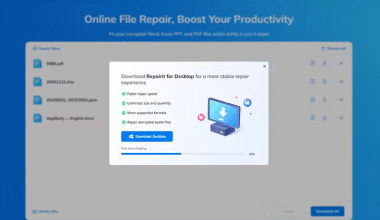Understanding how interest is calculated is necessary if you are looking to save for a big purchase, plan for retirement, or simply grow your wealth. This article will provide a guide on calculating interest earned, covering everything from simple interest to compound interest and the various factors that can affect your returns.
What is Interest Earned?
Interest earned is the money earned on an investment or deposit, typically expressed as a percentage or a total dollar amount. It is the payment the borrower makes to the lender in exchange for the use of money. Interest can be earned in various ways, such as through savings accounts, bonds, or other investments.
Interest earned is influenced by various factors, such as the demand for and supply of money, the compounding period, the time the money is invested, credit score and credit history, employment type and income, loan size and loan-to-value (LTV), credit risk, market conditions, inflation, economic growth, and government policy.
Simple Interest and Compound Interest
Compound and simple interest are fundamental concepts in finance and banking, used in loans, savings accounts, and investments. Simple interest is based solely on the principal amount of a loan or deposit, with no interest added to the principal over a specified period. It is calculated as a fixed percentage of the initial amount over a specified period. Compound interest, on the other hand, accumulates and compounds over the principal amount, charged on both the principal balance and any accumulated interest.
The main difference between simple and compound interest is the way interest accumulates. Simple interest grows based only on the principal amount, calculated once annually, while compound interest is based on the principal amount and the interest compounded for a period. This results in compound interest growing exponentially as the interest accumulates.
Borrowers prefer simple interest for short-term loans, bonds, and fixed-rate investments, while investors prefer compound interest for savings accounts. Compound interest typically generates higher returns over the long term, hence, making it easier to repay debt with simple interest. Also, in long-term financial scenarios, simple interest is better for borrowers as it doesn’t pay interest on interest, and it is easier to repay debt with simple interest.
Pros of Collecting Interest
Collecting interest has several cons, especially for investors or financial institutions that lend money. The pros include the following:
- Reliable Source of Income: Interest often provides a consistent stream of income. The lender can receive a fixed or at least consistent amount, offering a predictable cash flow. This is particularly true if the borrower is reliable with their payments.
- Efficient Use of Capital: Instead of having idle capital, lending money to others can be a more efficient way of deploying capital. This is especially true in the short term when the lender may need that money for a specific reason in the longer term.
- Passive Income: Collecting interest is often considered one of the simplest forms of passive income. After signing the loan agreement, loans may require little to no administration or maintenance.
- Compound Interest: The earnings can be higher for individuals or institutions that offer compound-interest loans. Compound interest is interest on both the principal and the interest paid on that loan. Also, savings accounts with banks often earn compound interest; any prior interest earned on your savings is deposited into your account, and this new balance earns interest in future periods.
- Encourages Economic Activity: Interest encourages economic activity by allowing individuals to borrow and lend money. Capital is not just lying around idly; some borrow, and others lend it. Hence, individuals are always encouraged to put money to use through interest payments.
Cons of Collecting Interest
Collecting interest can have some cons depending on the lender’s or borrower’s perspective and the specific circumstances involved. The cons can include the following:
- Legal Considerations and Compliance with State Laws: Debt collectors must understand state laws limiting charging contractual or prejudgment interest and navigate court interpretations of disclosure requirements. Some states allow collectors to charge statutory interest at a rate that complied with state law, while others have restrictions or limitations.
- Risk of Legal Action: If a debt collector attempts to collect interest in situations where the creditor has stopped collecting interest after charging off the debt, they may risk legal action. Certain judges have held that only a jury can decide whether a debt collector may charge interest in such situations.
- Disclosure Requirements: Some judges require debt collectors to inform debtors of accrued interest and its accrual rate. If the debt collector fails to do this, they may violate the Fair Debt Collection Practices Act (FDCPA).
- Taxable Income: Interest revenue is taxable; even a tiny amount of interest earned may push a taxpayer into a higher tax bracket.
- Potential for Lower Returns: Collecting interest may yield lower returns than what could have been earned if the lender had deployed the capital for their investment purpose.
- Negative Perception: Depending on the borrower, the rate of interest, and the circumstances, collecting interest can sometimes attract negative attention or criticism.
How Interest Earned Contributes to the Growth of Funds
Interest earned contributes to the growth of funds in the following ways:
- Compound Interest: Compound interest involves earning interest on both the principal and accumulated interest, enabling exponential growth and faster fund growth than simple interest.
- Reinvestment: When interest is earned, it can be reinvested into the fund. This means that instead of withdrawing the interest, it is added to the principal, allowing the funds to grow faster. Reinvesting the interest earned ensures that the growth is not limited to the initial principal amount but also includes the returns generated by the interest itself.
- Time: Longer investment in compound interest increases growth potential, as the snowball effect accelerates over time. Early investment and compounding are crucial for long-term success.
- Regular Contributions: Regularly contributing to the funds can also contribute to their growth. When additional funds are added to the principal, it increases the base on which interest is calculated, leading to higher returns over time. This is particularly effective when combined with compound interest, as the additional contributions can further accelerate the growth of the funds.
- Bond Funds: Bond funds invest in corporate or government-issued debt, paying interest through coupon payments. Each security earns a set annual interest rate, which is passed on to shareholders, contributing to the fund’s overall growth.
- Compounding Investment Returns: When you invest in the stock market, you earn a return based on the change in the value of your investment. When the value of your investment goes up, you earn a return. If you leave your money and the returns you earn are reinvested in the market, those returns compound over time.
How to Calculate Interest Earned on a Savings Account
To calculate the interest earned on a savings account, you need to understand the type of interest your bank is applying, the interest rate, and the compounding frequency. Banks usually use compound interest, calculated on the initial principal and the accumulated interest of previous periods.
Step 1: Understand the Type of Interest
There are two types of interest: Simple and Compound. Simple interest is money earned solely on the principal or the original amount deposited. It doesn’t account for any interest earned over time. Compound interest is calculated using the principal balance plus any interest earned over time. When this earned interest is compounded, it depends on your bank and account. Interest could be compounded daily, monthly, quarterly or annually.
Step 2: Calculate the interest
To calculate compound interest, you can use the formula: A = P(1 + R/N)NT
where:
- A is the amount of money you’ll have in your bank account after interest is paid
- P is your principal deposit or the original balance of your account
- R is the yearly interest rate of your account in decimal format (APY)
- N is the number of times your bank compounds interest in a year
- T is the time, in years, you want to calculate for (1 month = 0.083 years)
For instance, if you have an account with $1,000 that compounds monthly with a 1% APY (Annual Percentage Yield), your variables would be:
- P = $1,000
- R = 0.01 (1% expressed as a decimal)
- N = 12 (compounds monthly)
- T = 1 (for one year)
Then, plug all of these numbers into the equation: A = 1,000 (1 + 0.01/12)^(12*1)
This equation will give you the total amount in your account after paying interest.
Step 3: Find the Interest Earned
Subtract your original balance (P) from the total amount (A) to find the interest earned. Using the previous example: Interest earned = A – P.
How to Calculate Interest Earned on a CD
To calculate the interest earned on a Certificate of Deposit (CD), you can use the compound interest formula, which considers the original balance, the number of times interest is compounded per year, and the annual percentage yield (APY).
Here’s the formula: A = P (1 + r/n) (NT)
Where:
- A is the ending amount (the original balance plus all interest earned after n years).
- P is the original balance (or your initial deposit since there are typically no other contributions to CDs).
- r is the annual interest rate (in decimals), the APY.
- n is the number of times interest is compounded per year (typically 365 for daily, 12 for monthly, and four quarterly).
- t is the number of years the money is invested
Once you get a result for A, subtract P from A (A – P) to get the interest amount
For example, if you have a $1,000 CD with a term of three years and an APY of 5%, you can plug the values into the formula like this: A = 1000(1 + 0.05/1)^(1*3)
After calculating A, subtract P from A to get the interest amount: Interest = A – P
You can also use online CD calculators to determine how much interest is earned on a CD. You just need to enter a few pieces of information, like the deposit amount, CD term, and rate, and the calculator will compute the APY and the ending balance.
The interest earned on a CD varies based on your deposit, CD rate, and term length. Also, remember that interest on a CD is taxed when the bank applies it to your account, regardless of when you withdraw your CD funds.
How to Calculate Interest Earned on Investment
To calculate the interest earned on an investment, you must first determine whether the interest is simple or compound.
For simple interest, the formula is I = PRT, where:
- I is the interest earned
- P is the principal amount (the initial amount of money invested)
- R is the interest rate (in decimal form)
- T is the time the money is invested (in years)
This formula calculates the interest earned without considering any interest that might be earned on previous interest payments. This is typically used for short-term loans or investments.
Example of calculating simple interest:
P = 1000 (Principal amount)
R = 0.05 (Interest rate of 5% per annum)
T = 2 (Time in years)
Calculate interest: I = P x R x T
Result: $100
For compound interest, the formula is A = P (1 + r/n) (NT)
This formula calculates the interest earned on the initial investment (the principal) and the previously earned interest.
Example of compound interest:
- P = 1000 (Principal amount)
- r = 0.05 (Annual interest rate of 5% per annum)
- n = 1 (Number of times interest applied per period)
- t = 2 (Time in years)
Calculate the total amount after 2 years: A = P * (1 + r/n) ** (n*t)
Calculate interest: I = A – P
interest earned is $102.50
Compound interest results in a greater return on your investment than simple interest, given the same principal, rate, and period. This is because compound interest earns interest on both the initial principal and the accumulated interest from previous periods. In contrast, simple interest only earns interest on the initial principal. Also, for compound interest, the more frequently interest is compounded within a year, the higher the effective annual interest rate will be.
How Much Is 4 per cent interest on $10,000?
If you invested $10,000 in a savings account that offered a daily compounding interest rate of 4% annual yield, you would receive $408 in interest the first year, $425 the second year, an additional $442 the third year, and so on.
Related Articles
- 15 Best Compound Interest Investments & All You Need
- CD VS MONEY MARKET: Which Account offers the Best services
- COMPOUND INTEREST: Meaning, Investment, Formula & Calculation
- What are Corporate Taxes: Meaning and Rates to Taxes






